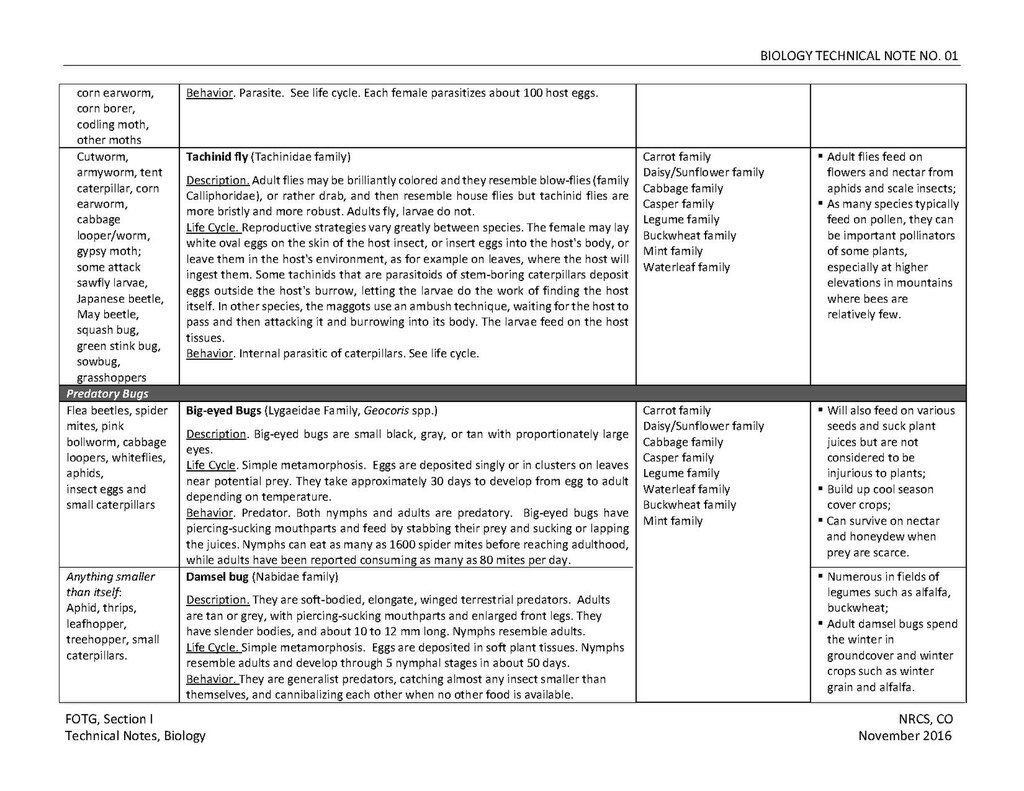- Cutworm,
- armyworm,
- tent caterpillar,
- corn earworm,
- cabbage looper/worm,
- gypsy moth;
- some attack
- sawfly larvae,
- Japanese beetle,
- May beetle,
- squash bug
- green stink bug,
- sowbug,
- grasshoppers
|
Tachinid fly (Tachinidae family)
Description. Adult flies may be brilliantly colored and they resemble blow-flies (family Calliphoridae), or rather drab, and then resemble house flies but tachinid flies are more bristly and more robust. Adults fly, larvae do not.
Life Cycle. Reproductive strategies vary greatly between species. The female may lay white oval eggs on the skin of the host insect, or insert eggs into the host's body, or leave them outside the host's environment, as for example on leaves, where the host will ingest them. Some tachinids that are parasitoids of stem-boring caterpillars deposit eggs outside the host's burrow, letting the larve do the work of finding the host itself. In other species, the maggots use an ambush technique, waiting for the host to pass and then attacking it and burrowing into its body. The larvae feed on the host tissues.
Behavior. Internal parasitic of caterpillars. See life cycle.
|
Carrot family
Daisy/Sunflower family
Cabbage family
Casper family
Legume family
Buckwheat family
Mint family
Waterleaf family
|
- Adult flies feed on flowers and nectar from aphids and scale insects;
- As many species typically feed on pollen, they can be important pollinators of some plants, especially at higher elevations in mountains where bees are relatively few.
|
- Flea beetles,
- spider mites,
- pink bollworm,
- cabbage loopers,
- whiteflies,
- aphids,
- insect eggs and small caterpillars
|
Big-eyed Bugs (Lygaeidae Family, Geocoris spp.)
Depcription. Big-eyed bugs are small black, gray, or tan with proportionally large eyes.
Life Cycle. Simple metamorphosis. Eggs are deposited singly or in clusters on leaves near potential prey. They take approximately 30 days to develop from egg to adult depending on temperature.
Behavior. Predator. Both nymphs and adults are predatory. Big-eyed bugs have piercing-sucking mouthparts and feed by stabbing their prey and sucking or lapping the juices. Nymphs can eat as many as 1600 spider mites before reaching adulthood, while adults have been reported consuming as many as 80 mites per day.
|
Carrot family
Daisy/Sunflower family
Cabbage family
Casper family
Legume family
Waterleaf family
Buckwheat family
Mint family
|
- Will also feed on various seeds and suck plant juices but are not considered to be injurious to plants;
- Build up cool season cover crops;
- Can survive on nectar and honeydew when prey are scarce.
|
Anything smaller than itself:
- Aphid,
- thrips,
- leafhopper,
- treehopper,
- small caterpillars.
|
Damsel bug (Nabidae family)
Description. They are soft-bodied, elongate, winged terrestrial predators. Adults are tan or grey, with piercing-sucking mouthparts and enlarged front legs. They have slender bodies, and about 10 to 12 mm long. Nymphs resemble adults.
Life Cycle. Simple metamorphosis. Eggs are deposited in soft plant tissues. Nymphs resemble adults and develop through 5 nymphal stages in about 50 days.
Behavior. They are generalist predators, catching almost any insect smaller than themselves, and cannibalizing each other when no other food is available.
|
- Numerous in fields of legumes such as alfalfa, buckwheat;
- Adult damsel bugs spend the winter in groundcover and winter crops such as winter grain and alfalfa.
|
